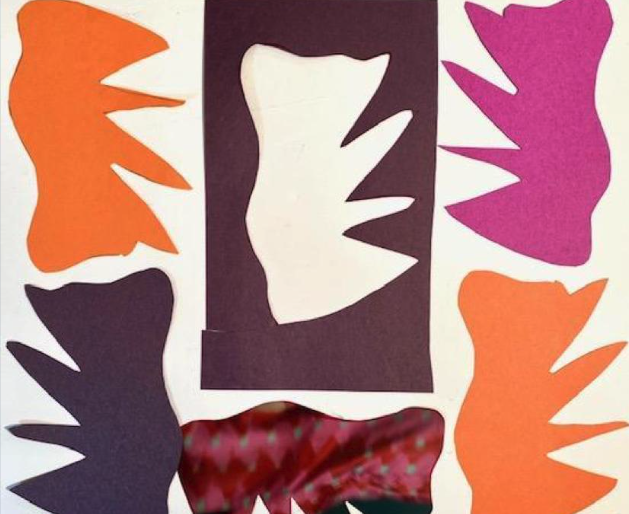Overview
Students will discover how shapes convey meaning and create a shape design for
their letter.
Materials and Tools
- Different papers found in the home
- Scissors
- Graphite pencil
- Glue
- Creating Meaning with Shape video
- Creating Meaning with Shape student slides
Objectives
- Students will learn about and implement the elements of art and principles of design
- Students will build problem-solving skills through experimentation with composition
- Students will understand that they can express aspects of themselves through their artistic choices
Students will understand that:
- Visual elements of a work of art express ideas
- Color, shape, texture, and line are foundational to design
- An artist conveys personal meaning in a self-portrait
Students will be able to:
- Create their own typography and use it to express their feelings and ideas
- Use the elements and principles of design to create a visually dynamic and meaningful composition
Activities
Note: The following steps are written with sample language you may use with your students as you go through the lesson. Explain to students that the slides and the video they see during the lesson will be shared with them so they can review the lesson on their own and continue to make more art.
Step 1: Introduction (5 minutes), Watch Creating Meaning with Shape Video (10 minutes)
In the previous lesson we explored meaning making in word design by thinking about paper choice and arrangement. We also learned that scale, or size, plays an important role in creating meaning in a design.
Today we will be learning how geometric, organic, and invented shapes can be used to express our personality and/or mood. Watch the Creating Meaning with Shape video to learn how Jamie, an artist instructor, designs shapes that represent her personality.
- What did you notice about the types of lines that Jamie used to describe her personality?
- When the artist described her love of dance and movement, she used wavy and
zigzag lines. Do you think waves and zigzags represent movement and dance well?
If so, why?
To describe her strength, Jamie used a rectangle.
- Why do you think rectangles are usually associated with strength?
- Can you think of another geometric shape with a strong foundation that would also show strength?
- What shape(s) describe your personality?
Review Student Slides #2-5 to help you develop your shape design. Slide #4 offers great questions to help you think through the process of designing your shapes. Remember to try out several possibilities before choosing your final shape.

Step 2: Transferring and Cutting Selected Shape (5-10 minutes)
Create a template of your selected shape and then use found papers to replicate the shape in different colors and patterns.

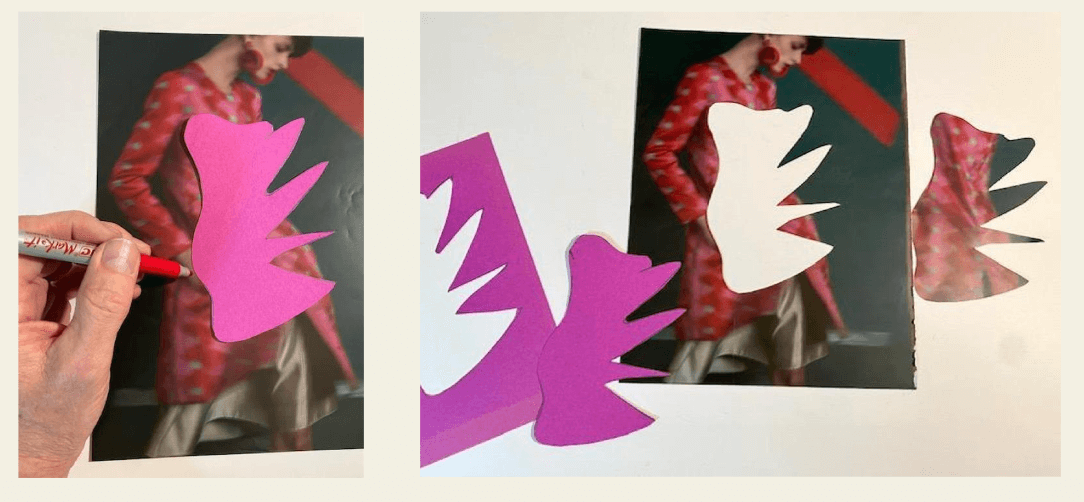
Here are some important points to note about Jamie’s process:
- Make the template shape bigger, about half a piece of construction paper
- Draw lightly and feel free to make small changes to your shape when you transfer it from your drawing to your construction paper
- Keep the positive and negative shape
- Choose found papers with interesting colors and patterns
- Place your template over the most interesting portion of the found paper
- Create three to four shapes
Step 3: Compose and Glue Collage, with Student Slide #8 (5-10 minutes)
Be sure to review Student Slide #8 for composition tips.

Step 4: Reflection Questions for Discussion (10 minutes)
- How does your collage convey your personality?
- How did you use repetition in your collage?
- Does your arrangement have movement or is it still? How did you create that feeling?
- How would your composition change if you only used the negative shapes?
- Would you rather be described in words or in shapes? Why?
Close Looking
Look closely at these two collages by Henri Matisse.
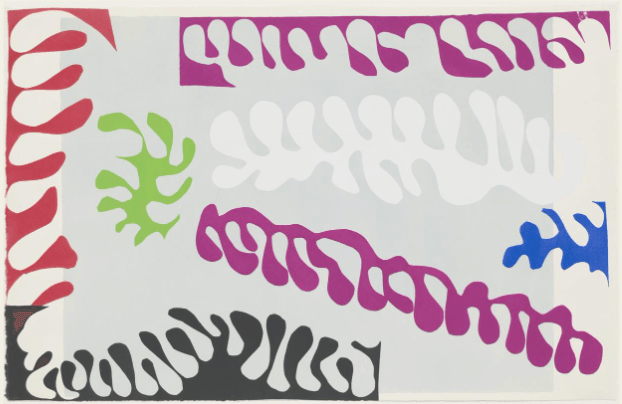
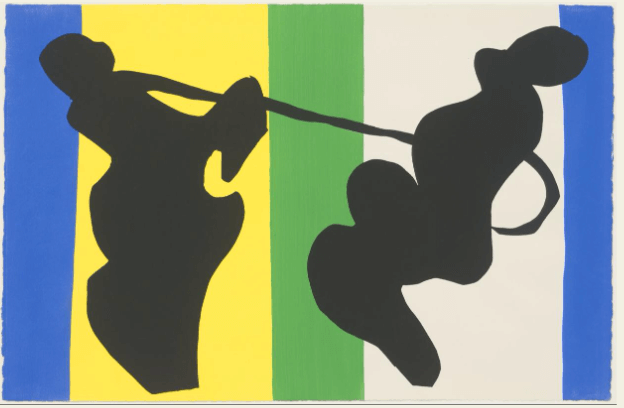
- How would you describe the shapes in each collage?
- What do you notice about how the shapes are arranged?
- What feelings do these different arrangements convey to you?
Vocabulary
Negative shape
Positive shape
Arrangement
Design
Symmetry
Composition
Collage
Resources
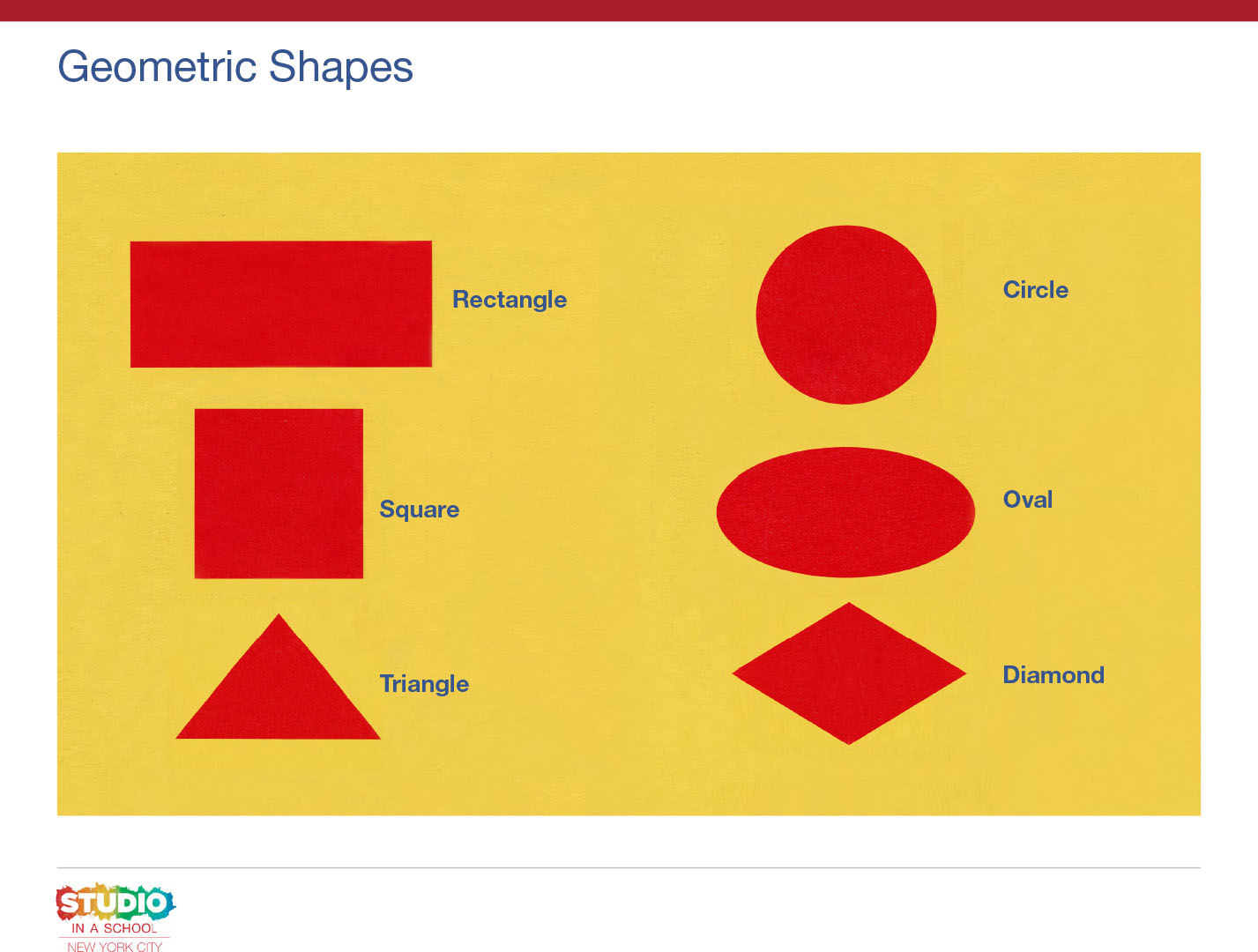
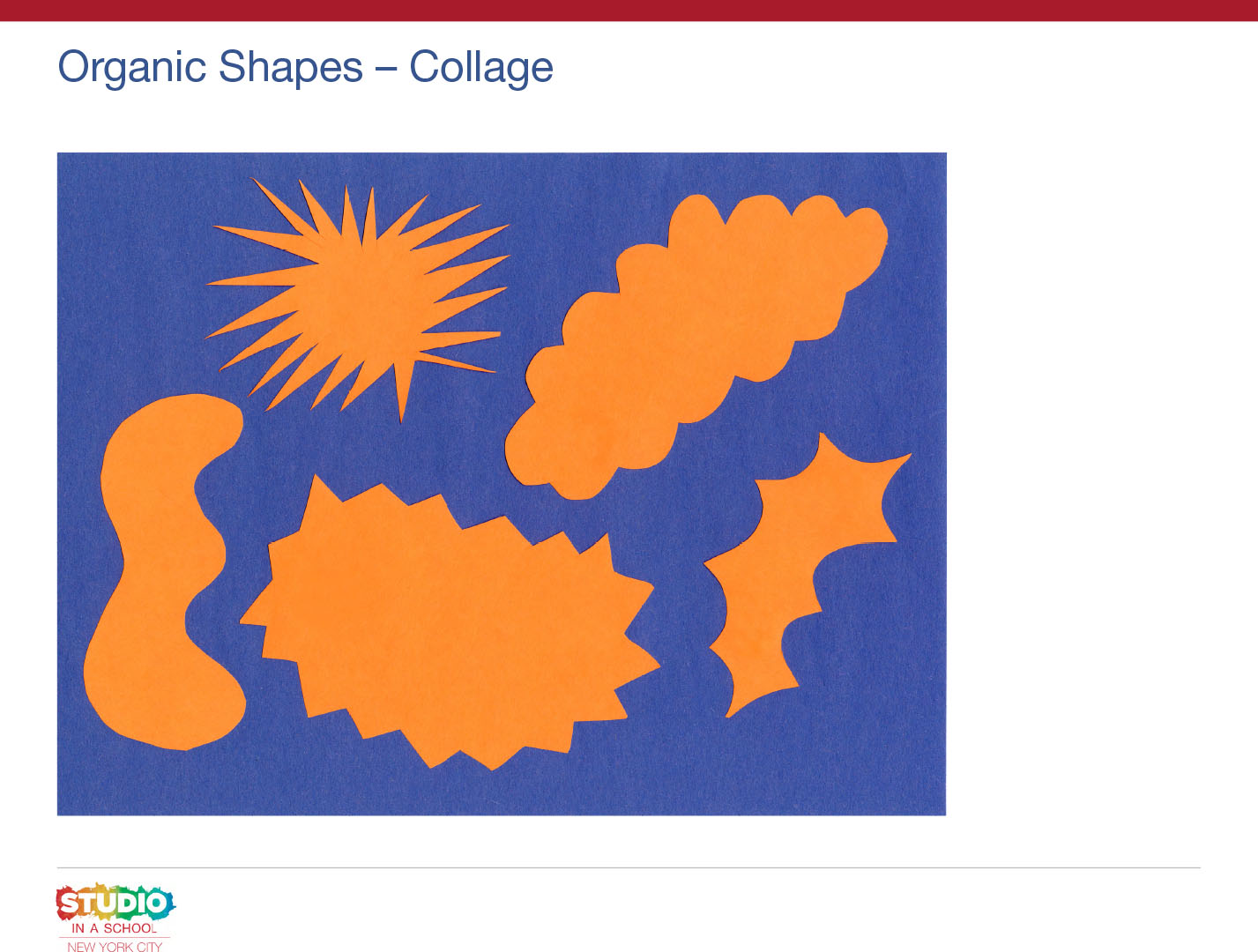
Henri Matisse, Lagoon (Le Lagon) from Jazz. 1947, Museum of Modern Art, New York: https://www.moma.org/collection/works/105395
Henri Matisse, The Cowboy (Le Cow-boy) from Jazz. 1947, Museum of Modern Art, New York: https://www.moma.org/collection/works/105392

